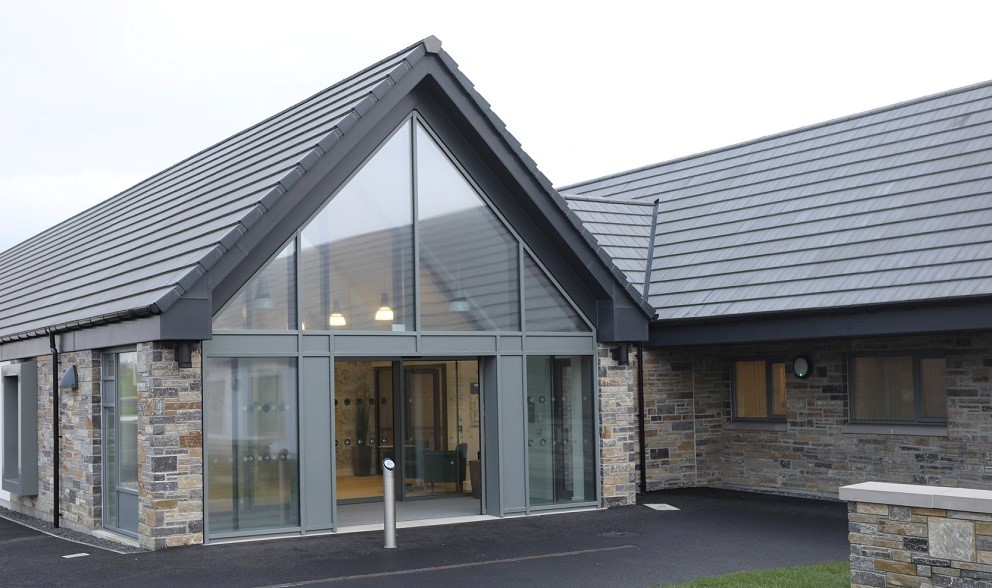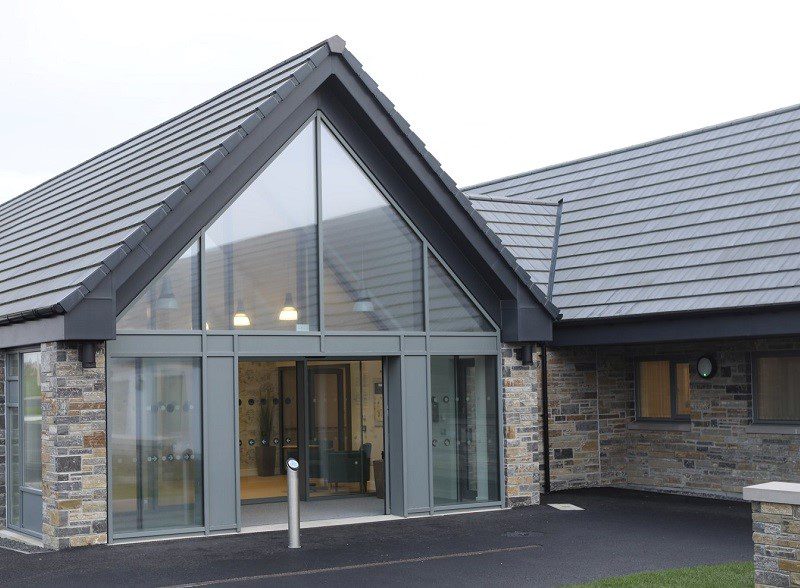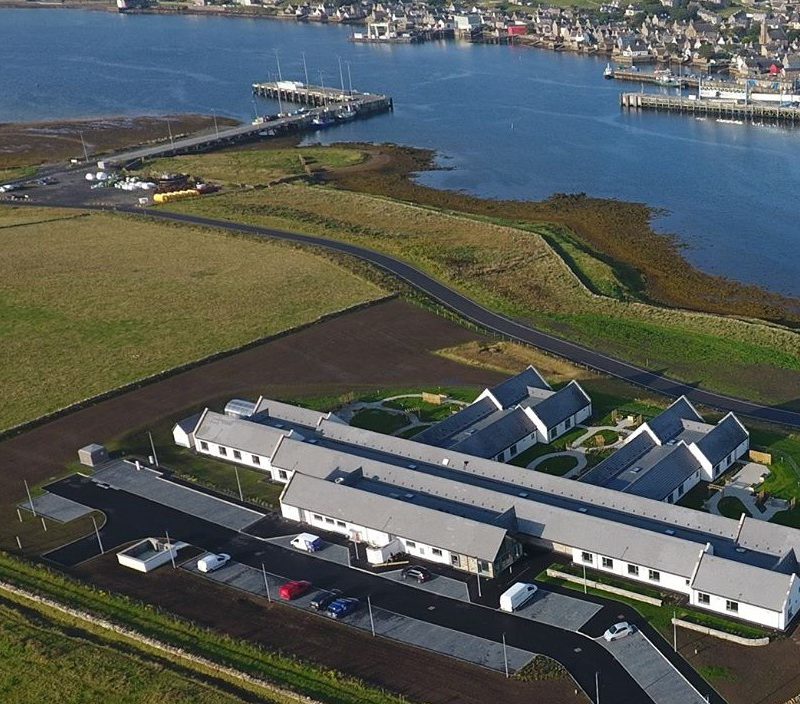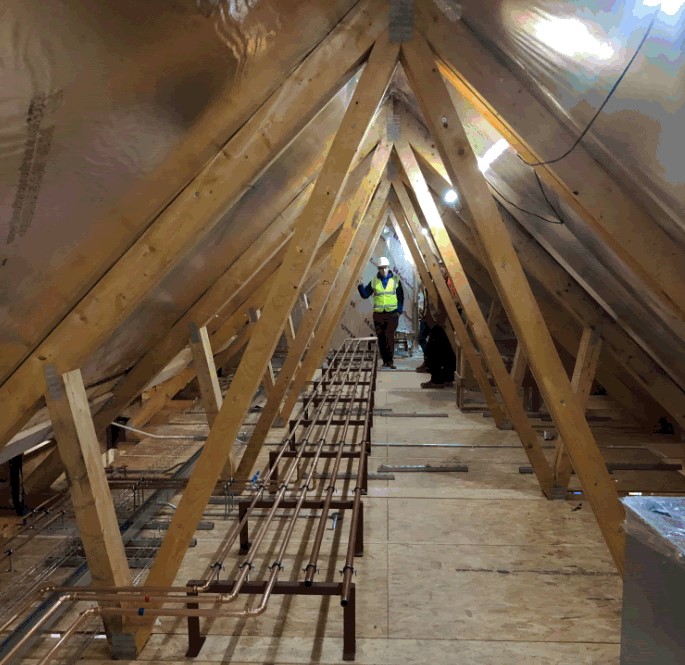
Project: Hamnavoe House Care Home, Orkney
Company: Scotframe
Sector: Residential
Technology: Timber Frame



Overview:
Hamnavoe House care home was procured by Orkney Islands Council to replace the existing facility with a new, modern alternative to provide high-quality care for elderly people.
Orkney Builders and Scotframe have worked together for two decades, developing a successful working relationship based on trust and mutual respect. But on this occasion. Scotframe’s contribution ended up being so much more.
Scotframe originally priced the job ‘as specified’. This included Scotframe’s Val-U-Therm PLUS® wall panels, and a standard trussed roof. Two different layers of rigid insulation board were requested, one cut and fitted between the truss top chords, and a second continuous layer above the rafters, on top of the trusses.
The intricacy of the proposed construction method and its heavy reliance on site workmanship and weather were increased by requirements for an M&E access walkway within the truss space for future maintenance. A sprinkler system, complete with heavy tanks, was to be located within the roof truss space, which required additional load-bearing support.
Realising that these complexities would likely extend the overall build programme – Orkney Islands Council was keen to complete within two years – Stephen Kemp of Orkney Builders asked Scotframe to come up with a new, innovative solution for the roof that would speed up the build process and reduce the overall labour requirement. Orkney, like many areas of the UK, is affected by a shortage of construction tradespeople.
Scotframe set to work. They believed that they could achieve increased buildability plus a higher thermal performance. A meeting was arranged with all parties to iron out the structural details, which was centred on using Scotframe’s Val-U-Therm PLUS® roof panel system, coupled with girder truss structural supports. As a result, the architects agreed to revise their plans to accommodate the improved roof structure.
The next step was a meeting in Orkney to agree a thermal approach for the project, led by Scotframe’s Technical Manager Alan Brodie. The best thermal solution was identified; namely to increase the roof panel rafter/insulation depth to 245mm and increase the acoustic insulation at floor level from 50mm to 100mm.
In addition, pre-decked floor cassettes within the Scotframe kit between girder trusses – meant that subsequent sub-contractors and trades who needed to work above or within roof areas already constructed, could do so – whilst joiners continued erecting floor and roof panels in future zones, considerably speeding up the overall site construction timescales.
Orkney Islands Council is impressed with the roof design and is exploring options to apply this approach to all new housing stock in future.